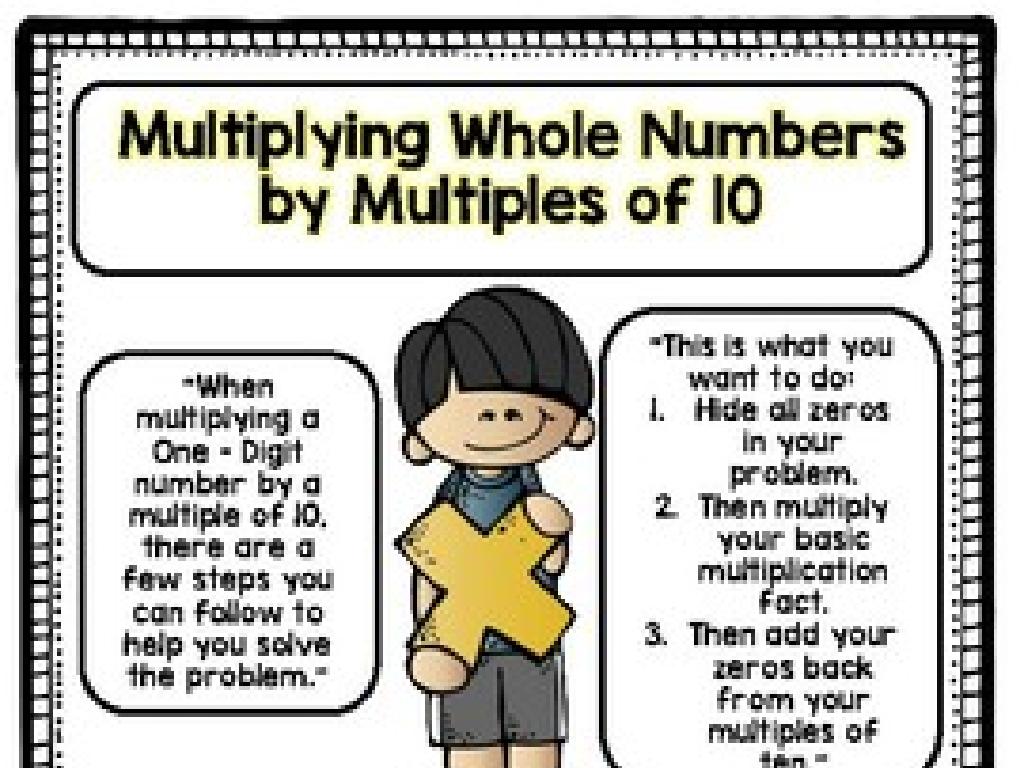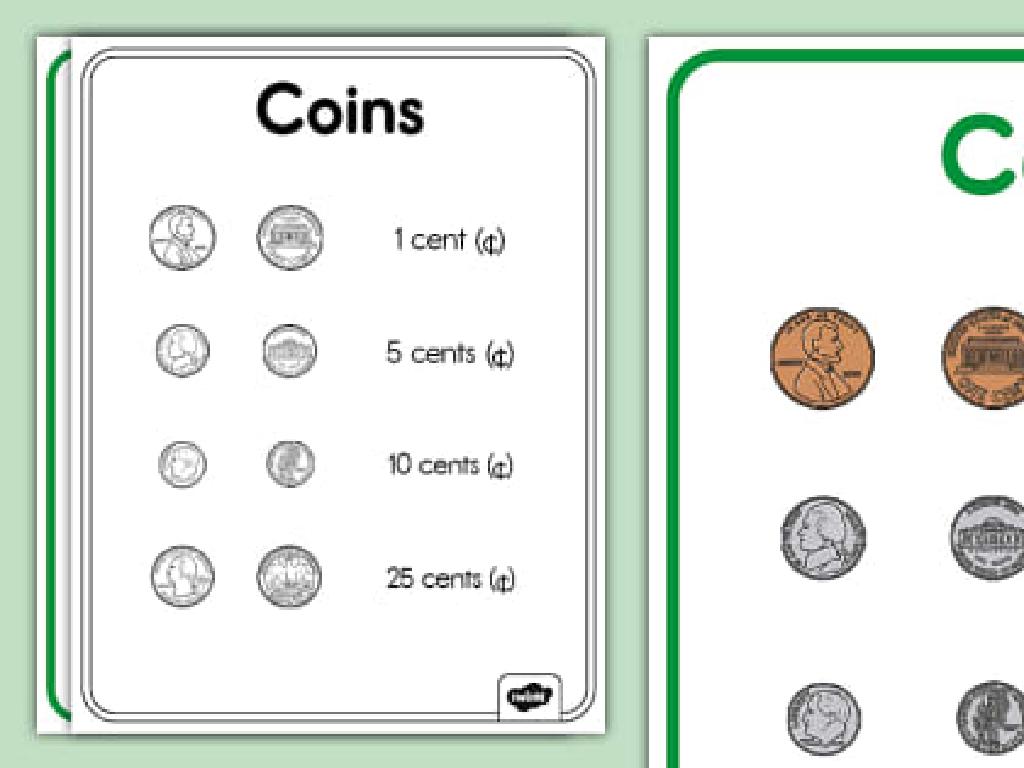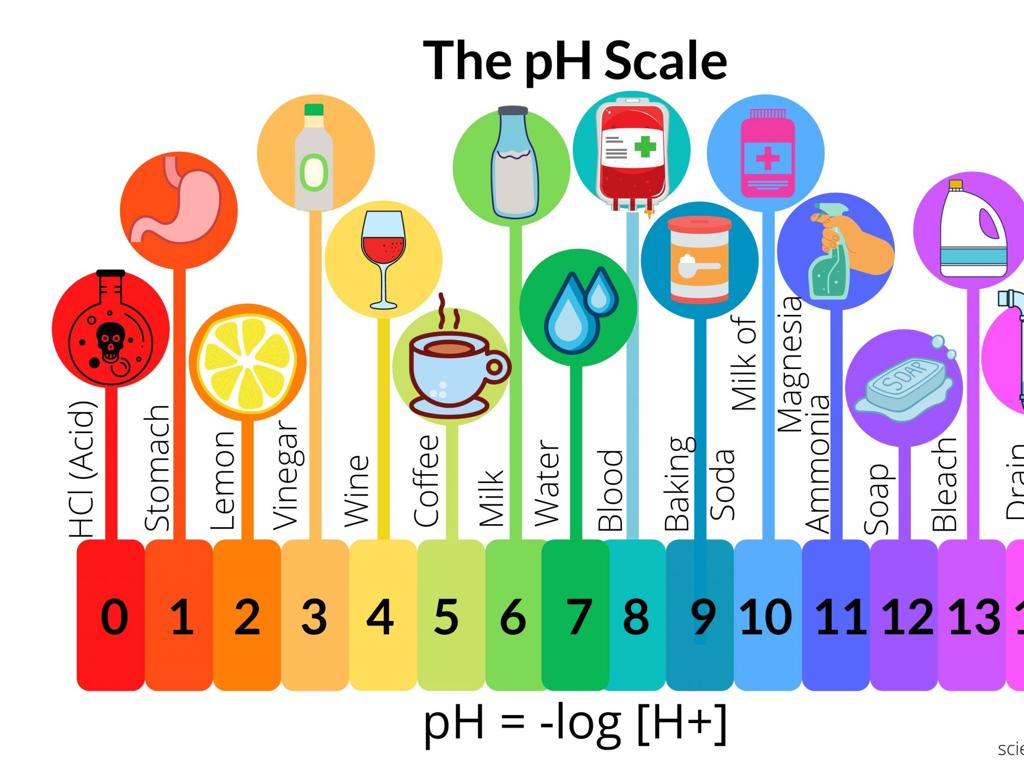Multiplication Input/Output Tables
Subject: Math
Grade: Fourth grade
Topic: Patterns And Sequences
Please LOG IN to download the presentation. Access is available to registered users only.
View More Content
Exploring Multiplication: Input/Output Tables
– Discover input/output tables
– Tables that show how a number changes when multiplied
– Recognize patterns with multiplication
– Find the rule that connects two numbers in a sequence
– Multiplication in daily life
– Use multiplication for quick calculations like buying fruits
– Practice with real examples
|
This slide introduces students to the concept of input/output tables in the context of multiplication, emphasizing the importance of recognizing patterns and sequences. Explain that these tables are tools that help us understand how numbers change when we apply the multiplication operation. Highlight how multiplication is not just a math concept but a practical tool used in everyday situations, such as calculating the total cost of multiple items. Encourage students to think of multiplication as a shortcut for addition. Provide real-life examples where they can apply multiplication to solve problems. During the class, engage students with hands-on activities where they create their own input/output tables and identify the multiplication rule.
Exploring Multiplication
– Multiplication: repeated addition
– If you have 4 groups of 3 apples, that’s 3+3+3+3 or 4 times 3
– Group multiplication examples
– 2 groups of shoes (2×2), 5 groups of pencils (5×5)
– Quick quiz on small numbers
– Test your skills with numbers like 2×3, 4×5!
– Understanding input/output tables
– Learn how to use tables to organize multiplication
|
This slide introduces the concept of multiplication as a form of repeated addition, which is a foundational skill in mathematics for fourth graders. Provide clear examples that illustrate multiplication in the context of grouping, such as groups of apples or pencils. Follow up with a quick interactive quiz to engage the students and assess their understanding of multiplying small numbers. Finally, introduce the concept of input/output tables as a tool for organizing and visualizing multiplication problems. Encourage students to participate and ask questions to ensure comprehension.
Discovering Patterns with Multiplication
– Understanding number patterns
– Patterns are sequences that repeat or change in a logical way.
– Multiplication creates patterns
– Using times tables, we can see repeated addition is a pattern.
– Patterns predict outcomes
– Knowing patterns helps us guess the next numbers in a sequence.
– Solving problems with patterns
– With patterns, we can find answers without calculating every step.
|
This slide introduces the concept of patterns in numbers and how multiplication can be used to establish and recognize these patterns. Emphasize that patterns are all around us and they make it easier to understand and predict the world of numbers. Show how multiplication tables are a simple example of patterns created through repeated addition. Explain that recognizing these patterns can help us solve mathematical problems more efficiently, as we can predict the next numbers in a sequence without having to perform every calculation. Encourage students to practice by creating their own multiplication input/output tables and identifying the patterns within them.
Exploring Multiplication Input/Output Tables
– What are Input/Output Tables?
– Tables that show how input numbers change to output after a rule is applied.
– Using tables for multiplication
– Multiply input number by a specific number to get the output.
– Finding missing numbers
– Use the rule to determine what the missing number should be.
– Recognizing multiplication patterns
– Look for repeated addition to see the pattern in multiplication.
|
This slide introduces students to the concept of input/output tables in the context of multiplication. Begin by explaining that these tables help us understand how numbers change when we apply a certain rule, usually a multiplication factor. Show how to use the table by multiplying the input number by a set number to find the output. Then, demonstrate how to find missing numbers by identifying the pattern or rule used in the table. Encourage students to look for patterns, such as repeated addition, which can help them recognize multiplication facts. Provide examples and practice problems to solidify their understanding. In the next class, students can work on creating their own input/output tables using multiplication.
Creating Multiplication Input/Output Tables
– Let’s build our own tables!
– Example: Multiplying by 4
– If input is 1, output is 4 (1×4), if input is 2, output is 8 (2×4), and so on.
– Practice time with your tables
– Fill in the missing numbers using multiplication by 4.
– Share your completed tables
– We’ll review as a class and discuss our results!
|
This slide is an interactive activity designed to help students understand and practice creating input/output tables with a focus on multiplication. Start by explaining the concept of input/output tables and how they are used to represent functions. Use the example of multiplying by 4 to demonstrate how to fill in the table. Provide each student with a blank table and ask them to fill in the missing values by multiplying the input number by 4. Once completed, encourage students to share their tables with the class to ensure understanding and to foster a collaborative learning environment. Prepare to assist students who may struggle and have additional examples ready for those who finish early.
Real-life Applications of Multiplication Tables
– Multiplication in daily life
– Cooking: Recipe adjustments
– If a recipe is for 4 people, how much for 6?
– Shopping: Calculating costs
– If 3 apples cost $1, what’s the cost of 10?
– Sharing: Dividing equally
– How to split 12 candies among 4 friends?
|
This slide aims to show students how multiplication is used in everyday situations, emphasizing its practicality beyond the classroom. When cooking, multiplication helps in adjusting recipes for a different number of people. While shopping, it aids in calculating the cost of multiple items. Sharing items equally among friends also requires multiplication to ensure fairness. Encourage students to think of other scenarios where they can apply multiplication, such as in planning parties, distributing school supplies, or even in playing games that require scorekeeping. This discussion can help them see the value of what they learn in math class and how it applies to real-world situations.
Class Activity: Multiplication Bingo
– Play Bingo with multiplication
– Each correct answer marks a spot
– Aim for a full row or column
– Get ready for fun and learning!
|
This interactive class activity is designed to help students practice their multiplication skills in a fun and engaging way. Prepare a Bingo game where each spot on the Bingo card corresponds to an answer from the multiplication tables. Provide students with multiplication problems, and as they solve them, they can mark off the corresponding answers on their cards. The goal is to get five correct answers in a row or column. This game encourages quick thinking and reinforces the concept of multiplication input/output tables. Possible variations of the activity could include using different multiplication facts, having students create their own Bingo cards with answers, or playing in small groups. Remember to celebrate each Bingo to keep the atmosphere lively and supportive.
Wrapping Up: Multiplication Tables
– Congratulations on learning!
– Homework: Craft your own table
– Use multiplication skills to fill in a table
– Discover patterns in homework
– Look for sequences in your table’s outputs
– Next class: More math patterns
|
Today’s class focused on understanding multiplication input/output tables, and the students did a great job grasping the concept. For homework, they are tasked with creating their own input/output table using their multiplication skills. This will reinforce their understanding and help them recognize patterns independently. Encourage creativity and remind them to be ready to identify the patterns they find. In the next class, we will delve deeper into patterns in math, building on what they’ve learned and explored at home. Provide examples of input/output tables if necessary and offer guidance on how to create them.






